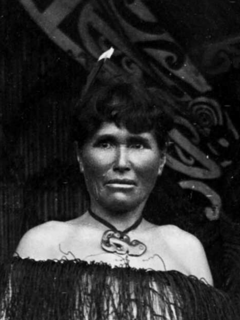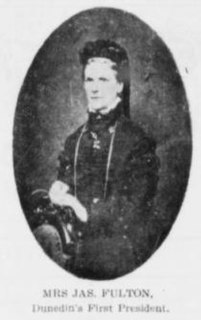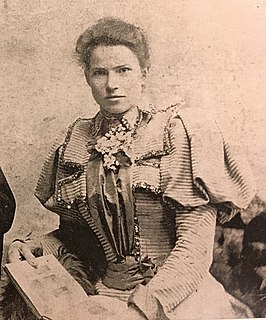Related Research Articles

The temperance movement is a social movement against the consumption of alcoholic beverages. Participants in the movement typically criticize alcohol intoxication or promote complete abstinence from alcohol (teetotalism), and its leaders emphasize alcohol's negative effects on people's health, personalities and family lives. Typically the movement promotes alcohol education and it also demands the passage of new laws against the sale of alcohol, either regulations on the availability of alcohol, or the complete prohibition of it. During the 19th and early 20th centuries, the temperance movement became prominent in many countries, particularly in English-speaking, Scandinavian, and majority Protestant ones, and it eventually led to national prohibitions in Canada, in Norway and in the United States, as well as provincial prohibition in India. A number of temperance organizations exist that promote temperance and teetotalism as a virtue.
The Woman's Christian Temperance Union (WCTU) is an active international temperance organization that was among the first organizations of women devoted to social reform with a program that "linked the religious and the secular through concerted and far-reaching reform strategies based on applied Christianity." It plays an influential role in the temperance movement. The organization supported the 18th Amendment and was also influential in social reform issues that came to prominence in the progressive era.

Katherine Wilson Sheppard was the most prominent member of the women's suffrage movement in New Zealand and the country's most famous suffragist. Born in Liverpool, England, she emigrated to New Zealand with her family in 1868. There she became an active member of various religious and social organisations, including the Women's Christian Temperance Union New Zealand. In 1887 she was appointed the WCTU NZ's National Superintendent for Franchise and Legislation, a position she used to advance the cause of women's suffrage in New Zealand.

Mary Greenleaf Clement Leavitt was an educator and successful orator who became the first round-the-world missionary for the Woman's Christian Temperance Union (WCTU). Setting out on virtually non-stop worldwide tours over a decade, she "went to all continents save Antarctica," where she crusaded against alcohol and its evils including domestic violence; and advocated for women's suffrage and other equal rights such as higher education for women. In 1891 she became the honorary life president of the World's WCTU.

Annie Jane Schnackenberg ( was a New Zealand Wesleyan missionary, temperance and welfare worker, and suffragist. She served as president of the Auckland branch of the Women's Christian Temperance Union New Zealand 1887 to 1897, and national president for WCTU NZ from 1892 to 1901 – overseeing the final push for petitioning the government to grant women the right to vote in national elections. She also was a charter member of the National Council of Women of New Zealand.

Cybele Ethel Kirk was a New Zealand temperance and welfare worker, suffragist, and teacher. Kirk was one of the first women appointed Justice of the Peace in New Zealand. After serving for many years as president of the Wellington chapter of the Women's Christian Temperance Union of New Zealand, she was elected in 1930 as the national Union's Recording Secretary. She simultaneously served as president of the National Council of Women of New Zealand from 1934 to 1937. She was elected President of the WCTU NZ in 1946, serving in that role through 1949.

Sophia Hinerangi was a New Zealand tourist guide and temperance leader. Of Māori descent, she identified with the Ngāti Ruanui iwi.

Catherine Henrietta Elliot Fulton was a New Zealand diarist, community leader, philanthropist, social reformer and suffragist. She was a founding member of the Dunedin chapter of Women's Christian Temperance Union of New Zealand in 1885 and national president of the WCTU NZ from 1889 to 1892.

Lily May Atkinson was a New Zealand temperance campaigner, suffragist and feminist. She served in several leadership roles at the local and national levels including Vice President of the New Zealand Alliance for Suppression and Abolition of the Liquor Traffic (1898–1921); president of Women's Christian Temperance Union New Zealand (1901–1905); and, Vice President of the National Council of Women of New Zealand (1901–1903).

The Temperance movement in the United States is a movement to curb the consumption of alcohol. It had a large influence on American politics and American society in the nineteenth and twentieth centuries, culminating in the unsuccessful prohibition of alcohol, through the Eighteenth Amendment to the United States Constitution, from 1920 to 1933. Today, there are organizations that continue to promote the cause of temperance.

The temperance movement in New Zealand originated as a social movement in the late-19th century. In general, the temperance movement aims at curbing the consumption of alcohol. Although it met with local success, it narrowly failed to impose national prohibition on a number of occasions in the early-20th century. Temperance organisations remain active in New Zealand today.
The temperance movement in the United Kingdom was a social movement that campaigned against the recreational use and sale of alcohol, and promoted total abstinence (teetotalism). In the 19th century, high levels of alcohol consumption and drunkenness were seen by social reformers as a danger to society's wellbeing, leading to social issues such as poverty, child neglect, immorality and economic decline. Temperance societies began to be formed in the 1830s to campaign against alcohol. Specific groups were created over periods of time dedicated to the different aspects of drinking. For example, in 1847, the Band of Hope was created to persuade children not to start drinking alcohol. Most of these temperance groups were aimed at the working class. Temperance was also supported by some religious groups, particularly the Nonconformist Churches. Although the temperance movement met with local success in parts of Britain, it failed to impose national prohibition, and disappeared as a significant force following the Second World War.
Margaret E. Winslow (1836-1936) was an American activist, newspaper editor, and author of several temperance books. She served at two separate times, and during the longest period of any editor-in-chief of Our Union, the national organ of the Woman's Christian Temperance Union (WCTU). It was a burst of inspiration from Winslow, relative to its simplicity and purity, which at the National WCTU Convention in Chicago determined the union to wear the white ribbon as a badge rather than the red, white, and blue which was strongly urged by many.

Sarah Jane Kirk was a New Zealand temperance leader, suffragist and human rights activist. She served as president of the Wellington chapter of the Women's Christian Temperance Union New Zealand for over a decade and served as one of the Union's national vice presidents.

Women's Christian Temperance Union of New Zealand is a non-partisan, non-denominational, and non-profit organization that is the oldest continuously active national organisation of women in New Zealand. The national organization began in 1885 during the visit to New Zealand by Mary Clement Leavitt, the first world missionary for the Woman's Christian Temperance Union. The WCTU NZ was an early branch of the World Woman's Christian Temperance Union and a founding affiliate of the National Council of Women of New Zealand. Men may join the WCTU NZ as honorary members.

Emma Eliza Packe (née de Winton of Christchurch, New Zealand was the founding president of the Christchurch Women's Christian Temperance Union in May 1885 and National President of the Women's Christian Temperance Union New Zealand from 1887 to 1889.

Fanny Buttery Cole was a prominent temperance leader and women's rights advocate in New Zealand. Cole was a founding member then president of the Christchurch chapter of the Women's Christian Temperance Union New Zealand and national WCTU NZ superintendent of the Press from 1897 through 1903. In 1906 Cole was elected national president of the WCTU NZ, a position she held until her untimely death shortly before her fifty-third birthday.

Rachel Don was an accredited Methodist local preacher who became a local and national leader in the Women's Christian Temperance Union New Zealand, serving as President from 1914 to 1926. Under her leadership, the WCTU NZ focused on white slavery, promoting national prohibition, and expanding women's career opportunities, especially in the New Zealand Police Force and judicial system. She represented New Zealand at a world-wide temperance convention in London in 1920, and at the U.S. Woman's Christian Temperance Union Jubilee in 1924. She served in many other local charitable organisations, and after visiting India, became a fervent leader of the Dominion Stocking League to send refurbished clothing for impoverished children and women to Christian mission stations in India.

Jessie Ann Hiett was a New Zealand temperance activist. A Baptist deaconess for thirty years, she was president of the Dunedin chapter of the Women's Christian Temperance Union New Zealand from 1916 to 1955, and meanwhile served as vice-president at the national level from 1926 to 1934 and again between 1946 and 1949. She was elected president of WCTU NZ in 1935 and served for ten years. Her most notable contributions at the national level was to lead the fight against the government's supplying of World War II troops with alcohol, maintaining the six-o'clock closing of public bars, and against the alcohol trade in the "dry" King Country.

Priscilla Crabb was a New Zealand temperance activist and community leader. For over a decade, she was a vice president of the Women's Christian Temperance Union of New Zealand, and she was acting president in 1920. She was one of the first women elected to the Palmerston North Hospital Board, and in 1928 she became the first woman in Palmerston North to be appointed a justice of the peace. While president of the local WCTU NZ chapter, she founded in 1917 an orphanage and refuge for mothers, the Willard Home, which continues today on the same site as a rest home for the elderly.
References
- Shiman, Lilian Lewis (December 1981). "The Blue Ribbon Army: Gospel Temperance in England". Historical Magazine of the Protestant Episcopal Church. 50 (4): 391–408.
- The Temperance Reform and Its Great Reformers, by W. H. Daniels, 1877.
- The Dundee Weekly Express, January 30, 1882
- Blackwell, Ernest; Booth, Richard T.; Wilberforce, Albert Basil Orme (1883). Booth of the Blue Ribbon Movement; or, the Factory boy who became a temperance evangelist. London: Passmore & Alabaster. Retrieved 28 December 2020.
- Troughton, Geoffrey; Morrison, Hugh, eds. (2011). "Richard Booth and Gospel Temperance Revivalism". The Spirit of the Past: Essays on Christianity in New Zealand History. Wellington, N.Z.: Victoria University Press. pp. 112–125.
- Harper's Encyclopædia of United States History from 458 A.D. to 1902, 1901, Harper & Bros.
Footnotes
- 1 2 3 4 Blocker Jr, Jack S.; Fahey, David M.; Tyrrell, Ian R., eds. (2003). Alcohol and Temperance in Modern History: An International Encyclopedia, Vol 1 . Santa Barbara: ABC-CLIO. pp. 107–109. ISBN 978-1-57607-833-4.
- ↑ Skrabec Jr, Quentin R. (2009). H.J. Heinz: A Biography. Jefferson, N.C.: McFarland. p. 85. ISBN 9780786453320.
- ↑ Shiman, Lilian Lewis (2016). Crusade against drink in Victorian England. Springer. pp. 110–111. ISBN 9781349191840.
- ↑ Fryer, Peter (1965). Mrs Grundy: Studies in English Prudery. Corgi. pp. 153–4.
- ↑ Shiman (2016), p. 265.
- ↑ See for example the notice about the Woman's Temperance Blue Ribbon Union in Wellington: "untitled". (Wellington) New Zealand Times. No. 7398. Papers Past, National Library of New Zealand. 11 February 1885. Retrieved 27 December 2020.
- ↑ Murray, J. Malton; Cocker, Rev. J. (1930). Temperance and Prohibition in New Zealand. London: The Epworth Press. p. 48. Retrieved 27 December 2020.
- ↑ "Public Reception of Mr. Booth". (Wellington) New Zealand Mail. No. 693. Papers Past, National Library of New Zealand. 12 June 1885. Retrieved 27 December 2020.
- ↑ Padwa, Howard; Cunningham, Jacob (2010). Addiction : a reference encyclopedia . Santa Barbara: ABC-CLIO. p. 265. ISBN 9781598842296.